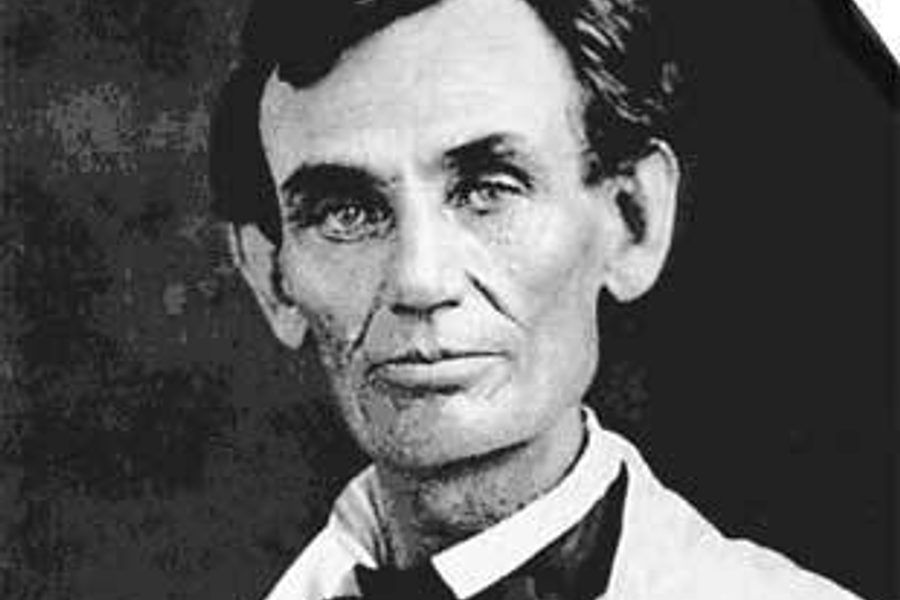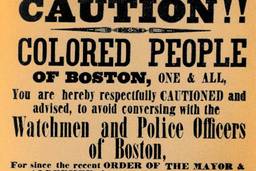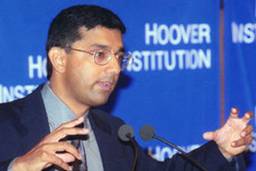
Last month, in his inauguration speech, George W. Bush brazenly assumed the mantle of the Great Emancipator, quoting Abraham Lincoln while declaring world war in the name of human liberty. Clearly the elastic Lincoln icon can be stretched in startling ways, when the example of Honest Abe, an eloquent autodidact of backwoods birth, can be appropriated by our current president, a legendarily incurious stumbling patrician prevaricator. But the comparison between the two controversial presidents is not entirely farfetched.
American Brutus, Michael W. Kauffman’s fascinating examination of John Wilkes Booth’s assassination plot, vividly recounts the vehement hatred and fear Lincoln generated, as he assumed sweeping powers and led what many saw as an imperialist war of aggression.
What Lincoln justified as judicious treatment of traitors during a crisis of national security others saw as lawless attacks on dissenters. And they had reason. At the outset of the Civil War, Lincoln began mass detentions — locking up citizens without charge and without access to judicial review. Throughout the country, military commissions tried civilians, and high-profile politicians were put to death. Secretary of State Seward bragged of his ability to throw anyone in jail at whim. Those who dared engage a lawyer risked extra prison time.
Lincoln’s ruthless prosecution of the war — especially his halt to POW exchanges, a policy that starved the South of soldiers while placing an impossible strain on scarce Confederate food supplies — increased his unpopularity. John Wilkes Booth first won conspirators to his cause with a plan to abduct Lincoln in order to force renewed exchange of prisoners, an widely popular idea.
From Lincoln’s perspective, there was a terrorist threat. From Canada, desperate Confederates planned unsuccessful attacks on civilian targets in hopes of rescuing prisoners or demoralizing the North — plotting for example to spread yellow fever through infected clothes and actually carrying out a failed attempt to set a dozen Manhattan buildings ablaze.
Meanwhile, Lincoln was condemned as a tyrant. Kauffman notes that it was “not just the fringe element that hated the president; judges, senators, editors and otherwise respectable citizens left no doubt of their contempt.” Booth, killed as he fled capture, had imagined history would hail him. But his infamy was sealed by the government’s all-out campaign against his hapless sidekicks, falsely portrayed as part of a vast Confederate plot. Shackled and hooded, tried by military commission for the nonexistent crime of “traitorous conspiracy,” they were unable to defend themselves and were hanged.
We who love Lincoln blindly forgive him and his cronies everything. Kauffman reminds us that blindness is bad for democracy.
It’s also bad for history. In The Intimate Life of Abraham Lincoln, C.A. Tripp conclusively proves that historians are blind. His provocative book, which argues that Lincoln was gay, makes a good case — and an even more convincing case that historical narratives, inherently reductive and subjective, can never fully convey the truth.
To talk of Lincoln being gay is somewhat anachronistic — while the 19th century knew homosexual acts, gay identity wasn’t invented until the 20th century, and it was common for people to share scarce bed space. But Tripp demonstrates that Lincoln was drawn to men, emotionally and physically. Most telling was Lincoln’s relationship to Captain David Derickson, whose unit Lincoln chose for White House guard duty. Following the difficult birth of the Lincolns’ youngest son, Mary Todd no longer shared her husband’s bed or bedroom. Captain Derickson was President Lincoln’s chosen bedmate — but only when Mary was away, suggesting that whatever the exact nature of Lincoln’s relationship to the Captain, Lincoln himself recognized it would hurt Mary. Also suggestive is the fond recall of an early Lincoln bedmate who described the future president’s “perfect” thighs.
Tripp’s work has generated loud criticism from some Lincoln scholars, who point out various ways that Tripp, an amateur, probably misread the historical record. But the crux of their argument is that Lincoln and Derickson could not plausibly have been lovers precisely because the two were so open in their intimacy, a cringe-worthy attempt to preserve the vaunted heterosexuality of a beloved icon. (Indeed, in a bizarre last chapter Tripp himself goes blind with iconolatry, arguing that Lincoln was great because he was gay — and that if only FDR had been queer, Pearl Harbor could have been averted.)
Does Lincoln’s sex life matter? Yes, because now more than ever, Lincoln the icon exerts a powerful and problematic hold on our leaders and ourselves; we need to take him off his pedestal. Furthermore, the search for truth always matters. As long as ignorance and lies are deployed in the service of oppression, we should welcome seekers like Kauffman and Tripp, whose unsettling revisionist histories succeed in goading us toward truth.








